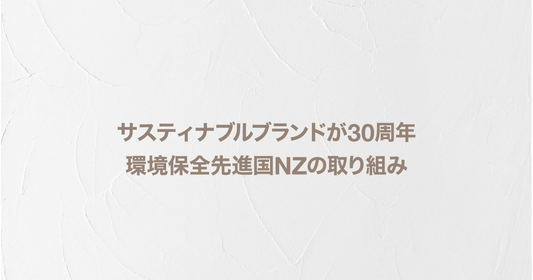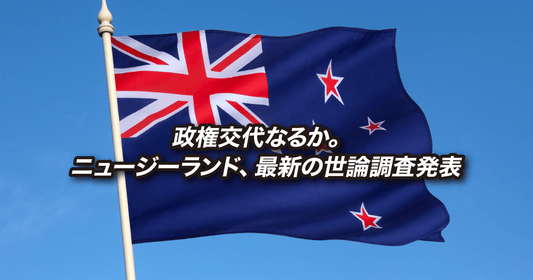New Zealand Winegrowers has released the 2022 edition of its Vintage Indicator .
▶ New Zealand Winegrowers official website
This time, based on that data, we will be providing you with information on New Zealand wine vintages.
What is a "vintage indicator"?
It is an index that summarizes the harvest volume of wine grapes for that year. Since NZ is in the southern hemisphere, the grape harvest ends in February to April, and the "Annual Grape Harvest Ranking" is announced around June to July.
Last year's article is here.
▶ New Zealand's wine grape "annual harvest ranking" for 2021 announced! Significant decline this year
Now, let me briefly explain New Zealand's wine grape harvest in 2022 and related trends.
2022 grape harvest and recent production trends
Last year in 2021, New Zealand's wine grape harvest was down 19% compared to the previous year due to bad weather in the spring. This was the largest reduction we have ever seen.
However, this year, the situation has turned around and it has increased by 44% compared to last year. Not only has it not recovered from last year's decline, but it has also increased by 16% compared to 2020, the year before last, making 2022 a bumper year for New Zealand wine grapes.
| Vintage year | Overall yield |
|---|---|
| 2021 | 370,000t |
| 2022 | 532,000t |
* Unit of harvest yield: t = ton
Data source: https://www.nzwine.com/en/media/statistics/vintage-data/
That's a 44% increase from last year! Do you think this will have any impact on prices?
In 2021, due to a significant decrease in grape harvest, wine production naturally decreased as well.
This is just my personal impression, but it seems to me that the number of wines, especially those in the reasonably priced range, has decreased significantly.
However, production has increased significantly this year, so I expect that more affordable wines will be available again.
Ranking of harvest yields by region
The yields by region are as follows:
| region | Harvest yield (percentage) | YoY comparison |
|---|---|---|
| Marlborough | 414,649t (80.6%) | +54% |
| Hawke's Bay | 40,172t (7.8%) | -2% |
| Gisborne | 19,334t (3.8%) | +11% |
| Central Otago | 12,575t (2.4%) | +22% |
| Nelson | 10,967t (2.1%) | +39% |
| North Canterbury | 9,779t (1.9%) | +34% |
| Wairarapa | 5,363t (1.0%) | +71% |
| Auckland | 1,343t (0.3%) | +8% |
Data source: https://www.nzwine.com/en/media/statistics/vintage-data/

Significant increase in Marlborough too! Over 80% of production
Marlborough, New Zealand's leading tobacco producing region, saw a 54% increase in harvest compared to last year. This significant increase in Marlborough's harvest is the biggest factor behind the increase in New Zealand's overall production.
Marlborough accounted for 80.6% of New Zealand's total harvest this year.
The figure of over 80% is overwhelming! That means most of the wine in New Zealand is made in Marlborough.
Yes. I think it's rare for a country to have so much production concentrated in one area.
Until recently, it was said that "about three-quarters of New Zealand's wine is produced in the Marlborough region," but the latest information would make it more accurate to say that "Marlborough is the region that produces more than 80% of New Zealand's wine."
Marlborough has some of the largest estates in the country, many of which use efficient mechanical harvesting methods.
In other words, Marlborough is a region that excels at producing relatively affordable wines (wines with a retail price of around 2,000 yen in Japan).
With Marlborough's production increasing dramatically in 2022, there should be significantly more Marlborough wine with "2022" on the label than there is with "2021."
There is also a high possibility that the amount of affordable New Zealand wine in circulation will increase.
On the other hand, what is concerning is the slight decrease in harvest yields in Hawke's Bay on the North Island.
Hawke's Bay is warmer than Marlborough and is known for producing rich red wines.
Although it still holds the second place in New Zealand in terms of harvest volume, it appears that the gap is gradually being closed by Gisborne in third place and Central Otago in fourth place.
Ranking of harvest yields by grape variety
Next, let's look at the yields for each grape variety.
| variety | Harvest yield (percentage) | YoY comparison |
|---|---|---|
| Sauvignon Blanc | 393,956t (76.5%) | +47% |
| Pinot Noir | 34,569t (6.7%) | +57% |
| Pinot Gris | 30,465 (5.9%) | +45% |
| Chardonnay | 29,762t (5.8%) | +27% |
| Merlot | 7,535t (1.5%) | -twenty four% |
| Riesling | 5,024t (1.0%) | +14% |
Reference data: New Zealand Winegrowers NZ Wine Vintage Indicators by Variety 2021
Pinot Noir is the second largest harvest, and Pinot Gris is also on the rise in popularity.
Looking at the ranking by grape variety, the Sauvignon Blanc harvest is stable, accounting for 76.5% of the total. In 2021, it was 74.8%, so this year's share is slightly higher than last year.
Of particular note is the increase in the Pinot Noir harvest. The harvest volume increased by 12,540 tons compared to last year, which is more than 1.5 times the previous year. In the variety ranking, it rose one place from last year to second place, and it can be said that 2022 was a bumper year for NZ Pinot.
On the other hand, Chardonnay is starting to lose popularity. In 2021, it was ranked second by variety, but in 2022, it dropped two ranks to fourth place. Although the harvest volume itself was still 1.26 times higher than last year, the increase rate was modest compared to other varieties, so it looks somewhat inferior.
Instead, Pinot Gris has risen to the top. It has competed with Chardonnay for the second place in white grape production, but in 2022 it finally overtook Chardonnay. It is now in third place in terms of overall harvest volume, and has overtaken Chardonnay to take second place in terms of white grapes alone.
Personally, I feel that it is quite difficult to express the unique characteristics of New Zealand with Chardonnay, but with Pinot Gris it may be easier to create a taste that is "quintessentially New Zealand Pinot Gris."
This may be proof that NZ Pinot Gris is now recognized as delicious around the world.
summary
We have brought you news that New Zealand's wine grape harvest has increased significantly in 2022.
Due to the spread of COVID-19, New Zealand has been experiencing a labor shortage and a decline in grape harvests, but this year they have overcome these challenges and have achieved a significantly larger harvest than ever before. This is good news for the New Zealand wine industry.
Wine made from grapes harvested this year, 2022, has already started to be sold in Japan as Nouveau, but white wine will not be available in full until autumn 2022. Most red wines will be released from 2023 onwards.
I wonder what kind of wine will be made from grapes from a bumper harvest year? I can't wait for it to arrive.






